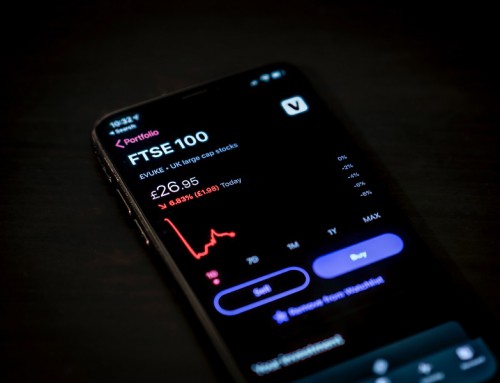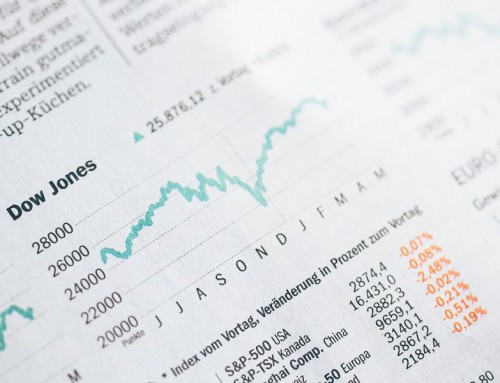As the global economy goes into a period of consolidation, assets such as equities and property will become cheaper as the market softens. This presents a buying opportunity for everyone to place their monies in an asset in hope for future appreciation. This then brings to mind the usual mantra.
“The higher the risk, the higher the return and vice versa”
Many investors have stayed true to this mantra without thinking about what it really entails. Many perceive that the rich get their wealth by investing in the riskiest of assets. Taking bets akin to gambling on the roulette table and then striking it rich because they were lucky. I agree that luck does play a role in investing. We can never know when the next calamity or epidemic is coming and we can never predict events such as droughts, floods and natural disasters. However, what we can see is good management and good balance sheets of a company.
This then brings me to my next point. 5 years to this day, when Apple Inc. shares were trading below USD$40 (Apple shares have gone through stock splits) was it considered a “risk-off” play to pick up some Apple shares? Apple Inc. had a great management and they had been consistently churning out quarter after quarter of profits adding to their cash hoard. They had no one close to creating the sort of ecosystem to rival theirs. Their product line was streamlined and they were definitely taking over the market. Currently the shares of Apple Inc. are trading at approximately USD$125. An increase of more than 200%. Within this 5 year period Apple Inc. started issuing dividends to shareholders as well. This represents an average return of more than 40% per annum for the 5 year period that just passed. All the investor had to do was to think carefully about what growth potential Apple Inc. presented to him and place his money in the company and let Steve Jobs and Tim Cook do the work for him. USD$100,000 invested in Apple in 2010 would become more than USD$300,000 today. Warren Buffet has been doing the same thing. Investing in companies that offer great value and growth potential. He would study these companies and take a look at their balance sheets. In Singapore’s context, Peter Lim’s bet on Wilmar was perhaps not so much a gamble but he saw something in the company and decided to take a calculated chance on it. It paid off in a huge manner for him. In contrast, many retail investors in China base their investments on the Chinese stock market based on hearsay. This is akin to betting on a horse at a horse race just because you overheard someone saying that he thinks this certain horse looks fast.
Rule of thumb for investing in equities: Take some time to study before investing in a company. Do not place a bet on penny stocks. It is better to buy a good company when it is under priced than an unknown company just because you think it is cheap.
Another popular asset which comes to mind is property. In Singapore, many investors are looking either overseas or in places right at the outskirts of Singapore. The main criteria would be that these properties are much more affordable. Taking to mind that a studio in Cambodia costs about SGD$200,000 as compared to something similar in Singapore which costs about SGD$700,000, it is not difficult to see why many are attracted to purchasing properties in developing countries. However, financing is often non-existent in developing countries and if it were available, the cost of financing, i.e. interest rates, would be much higher than what one would have to pay in Singapore. The ability to finance a property also does affect the return on equity in an investment. Consider the following examples:
Investing in a $700,000 property with 80% financing
Cash required: $140,000 (20%)
A 100% return on equity would require this property to increase in value by 20% i.e. $840,000
Investing in a $200,000 property with no financing
Cash required: $200,000 (100%)
A 100% return on equity would require this property to increase in value by 100% i.e. $400,000
Now which is more probable? The SGD$700,000 studio in Singapore to appreciate by 20% or the SGD$200,000 Cambodian property to double in price? Let us not forget that the Singapore property would be easier to manage if you were living in Singapore. So what is the balance sheet and management to look at when investing in a property? We have to take a look at the government of the country and how the country is run. Singapore is a corrupt free country with huge reserves. Investing in the country in the long run may not make you extremely rich due to the fact that prices are already seemingly high when pegged to citizens’ income. However, your investment in a Singapore property does look like a sound bet. Good open economy, corrupt free government, ample demand for tenants if the property is well located. The trick here is to buy something that is located in a relatively central location in our city state and not far off into the outskirts. Now then, compare this to investing in prime Cambodian land in Phnom Penh or in the heart of Iskandar, Malaysia. Bottom line remains the same. Just because something is affordable doesn’t mean it is cheap in valuation.
Rule of thumb for investing in property: Invest in a country with low corruption, where land is scarce, building codes are well defined, banking system is strong enough to offer leverage and where there is a concrete story for future demand growth for housing.
To sum up. Don’t buy something just because it looks cheap. Buy something because there is value in it.
Yours Sincerely,
Daryl Lum






